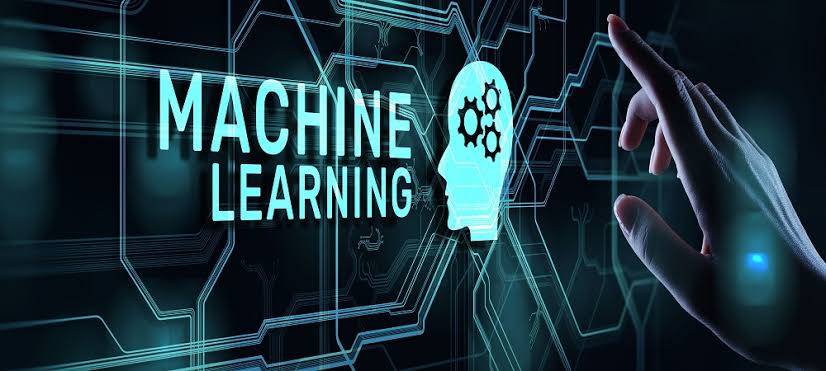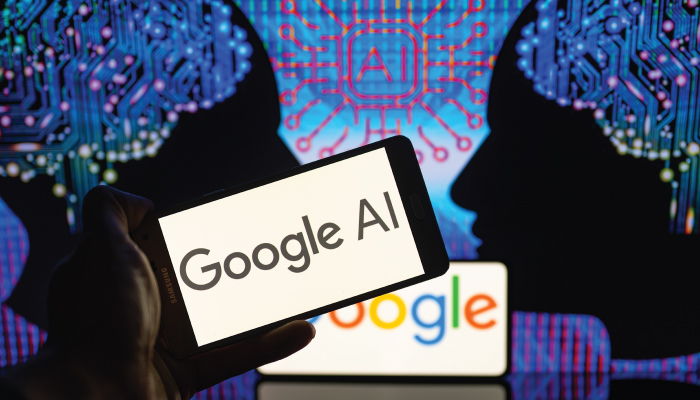Artificial Intelligence can play a vital role in enhancing cyber defense by providing various uses and benefits, such as threat detection, predictive analytics, and response mechanisms. AI can help cyber defenders analyze large amounts of data, recognize patterns and anomalies, learn from past incidents, forecast potential threats, generate alerts and recommendations, identify and remove malware, and protect sensitive data. In this context, we will explore AI’s main uses and benefits in cyber defense, provide some examples of AI techniques and tools for each use case, and cite some sources from web search results for further information.
AI for Threat Detection
One of the main uses of Artificial Intelligence in cyber defense is threat detection, which is the process of identifying and analyzing cyberattacks that target information systems and networks. Threat detection is essential for cyber defense, enabling cyber defenders to discover and mitigate cyberattacks before they cause serious harm.
However, threat detection poses many challenges, such as the large volume and variety of data to be processed, distinguishing between normal and malicious activities, and the evolution and adaptation of cyberattack techniques.
Artificial Intelligence in cyber defense: Various Techniques and Tools
AI can help overcome these challenges by applying various techniques and tools, such as machine learning, natural language processing, and data mining, to detect cyberattacks.
Machine learning
Machine learning is a subset of AI that enables machines or software to learn from data and improve performance without explicit programming.


It can help detect cyberattacks by using algorithms such as classification, clustering, anomaly detection, and deep learning to analyze data from various sources, such as network traffic, logs, sensors, and user behavior, and to identify patterns, anomalies, and signatures that indicate malicious activities.
Natural language processing
Natural language processing is another subset of AI that enables machines or software to understand and generate natural language, such as text and speech.
It can help detect cyberattacks by using techniques such as sentiment analysis, topic modeling, and named entity recognition to analyze text and speech data from various sources, such as emails, social media, and chatbots, and to extract relevant information, such as keywords, topics, entities, and emotions, that indicate malicious intentions.
Data mining
Data mining is the process of discovering useful and meaningful patterns and insights from large and complex data sets. It can help detect cyberattacks by analyzing data from various sources, such as databases, web pages, and documents, and discovering relationships, trends, and sequences that indicate malicious behaviors.


Techniques such as association rule mining, frequent pattern mining, and sequential pattern mining can be used to analyze data from various sources, such as databases, web pages, and documents.
What are the examples of AI techniques and tools for threat detection?
Some examples of AI techniques and tools for threat detection are:
FortiAI:
FortiAI is a self-learning AI solution for threat detection and response developed by Fortinet, a global leader in cybersecurity. It uses deep neural networks to analyze data from various sources, such as network traffic, logs, and endpoints, and detect and classify real-time threats, such as malware, phishing, and ransomware.
It also provides automated response and remediation actions, such as quarantine, block, and delete, to mitigate threats and prevent further damage.
CrowdStrike Falcon:
CrowdStrike Falcon is a cloud-native AI-powered platform for endpoint protection developed by CrowdStrike, a leading provider of cybersecurity solutions. It uses machine learning and behavioral analytics to analyze data from various sources, such as endpoints, sensors, and the cloud, and to detect and prevent threats, such as malware, exploits, and zero-day attacks, in real-time.


CrowdStrike Falcon also provides threat intelligence and incident response services to enhance threat detection and response capabilities, such as alerting, investigating, and remediating.
Explain how AI can help forecast potential threats based on historical data and behavioral analytics.
AI for Predictive Analytics
Another use of AI in cyber defense is predictive analytics, which uses historical and current data to forecast future events and outcomes. Predictive analytics is important for cyber defense, as it enables cyber defenders to anticipate and prepare for potential threats, such as emerging attack vectors, new vulnerabilities, and future targets. However, predictive analytics also faces many challenges, such as the uncertainty and variability of future events, the complexity and interdependency of the cyber environment, and the ethical and legal implications of using predictive data.
What are the techniques and tools that AI uses to address the challenges?
AI can help address these challenges by applying various techniques and tools, such as user and entity behavior analytics and automated decision-making, to forecast potential threats.
UEBA:Artificial Intelligence in cyber defense
UEBA is a technique that uses machine learning and behavioral analytics to analyze data from various sources, such as users, devices, applications, and networks, and to identify patterns, anomalies, and deviations that indicate abnormal or risky behaviors.
It can help forecast potential threats by using clustering, anomaly detection, and outlier detection algorithms to segment and profile users and entities, detect and score anomalous and risky behaviors, and generate alerts and recommendations for further investigation and action.
Read more about. Why Janitor AI keeps crashing: A Complete Guide
Automated decision-making: Artificial Intelligence in cyber defense
Automated decision-making is a technique that uses machine learning and rule-based systems to analyze data from various sources, such as sensors, logs, and alerts, and to make decisions and actions based on predefined criteria and objectives.


It can help forecast potential threats by using algorithms such as classification, regression, and reinforcement learning to evaluate and prioritize threats, optimize and execute response strategies, and learn and improve from feedback and outcomes.
Some examples of AI techniques and tools for predictive analytics are:
Google AI Cyber Defense Initiative:
It is a research project that aims to improve security and privacy using AI. Google, a global leader in technology and innovation, leads it. It uses machine learning and deep learning to analyze data from various sources, such as web, cloud, and mobile, and to forecast potential threats, such as phishing, malware, and data breaches, in real time.


It also provides security and privacy solutions, such as encryption, authentication, and verification, to protect data and users from threats and attacks.
Artificial Intelligence in cyber defense: IBM Watson for Cyber Security:
IBM Watson for Cyber Security is a cognitive AI system for threat detection and response developed by IBM, a leading technology and business solutions provider. It uses natural language processing and machine learning to analyze data from various sources, such as unstructured data, structured data, and threat intelligence, and to forecast potential threats, such as advanced persistent threats, insider threats, and fraud, in real time.
IBM Watson for Cyber Security also provides cognitive security operations center (SOC) services, such as alert, investigate, and respond, to enhance threat detection and response capabilities.
Artificial Intelligence in cyber defense for Response Mechanisms
A third use of AI in cyber defense is response mechanisms, which are the processes and actions taken to respond to identified threats and mitigate their impact and damage. Response mechanisms are essential for cyber defense, as they enable cyber defenders to contain and eliminate threats and to restore and recover systems and networks. However, response mechanisms also face many challenges, such as the speed and scale of cyberattacks, the diversity and complexity of response actions, and the coordination and collaboration of response teams.
Read more:
15 Best AI Scheduling Assistants For 2024 (Free and Paid)
Frequently Asked Questions about Artificial Intelligence in cyber defense
1. What is the difference between AI and ML in cyber defense?
A: AI is the broad term for machines or software that can perform intelligent tasks. ML is a subset of AI that enables machines or software to learn from data and improve performance.
2. How can AI help prevent cyberattacks?
A: AI can help prevent cyberattacks by detecting, forecasting, and responding to threats. It is using various techniques and tools, such as machine learning, natural language processing, data mining, generative AI, and automated decision-making.
3. Is it safe to automate cybersecurity using AI?
A: Automating cybersecurity using AI can have both pros and cons. On the one hand, it can improve cyber defense’s efficiency, accuracy, and scalability. On the other hand, it can also introduce new risks and challenges.They are such as the reliability, transparency, and accountability of AI systems. The possibility of AI being hacked or manipulated by attackers, and the ethical and legal implications of using AI for cyber defense. Therefore, automating cybersecurity using AI requires careful design, and should not replace human oversight and intervention.
4. What are the challenges and limitations of AI in cyber defense?
A: AI in cyber defense is not a perfect or complete solution, and it faces many challenges and limitations. Such as the quality, availability, and security of data, the complexity, and dynamism of the cyber environment, the ethical and legal implications of using AI for cyber defense, and the social and human aspects of cyber defense. AI in cyber defense requires constant improvement, validation, and verification and should be used in conjunction with other methods and tools, such as human expertise, collaboration, and education.
5. How can I learn more about Artificial Intelligence in cyber defense?
A: You can learn more about AI in cyber defense by reading sources from web search results. Such as Role of Artificial Intelligence (AI) in Cybersecurity – Fortinet, and The Role of AI in Cybersecurity, CrowdStrike. You can also take some online courses or programs. Such as Artificial Intelligence for Cybersecurity Specialization and Cybersecurity and Artificial Intelligence. They teach you the fundamentals and applications of AI in cyber defense. You can also join some online communities or forums, such as r/cybersecurity and r/artificial, that discuss and share information and opinions about AI in cyber defense.
Conclusion
Artificial Intelligence in cyber defense can help cyber defense by detecting, forecasting, and responding to threats using various techniques and tools. However, AI in cyber defense is not perfect or complete, and it faces many challenges and limitations. Therefore, AI in cyber defense needs constant improvement, validation, and verification and should be used with other methods and tools.
Read more:


